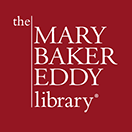Did Mary Baker Eddy find mathematical terms helpful?

mustafahacalaki/DigitalVision Vectors/Getty Images
Recently an inquirer asked about the extent of Mary Baker Eddy’s knowledge of mathematics. Eddy was well-versed in various fields of study, in both literature and the sciences, sometimes drawing analogies she found useful to her metaphysical teaching.1 So it may not be surprising that a number of math terms appear in her writings.
We know that when Eddy attended school in the late 1820s and 1830s, her primary education included arithmetic. One of the textbooks she possibly studied was The Scholar’s Arithmetic by Daniel Adams, published in Keene, New Hampshire, not far from her home.2 That volume discussed such topics as basic addition and subtraction, percentages, and measurements.
Eddy was also educated at Sanbornton Academy, and likely at Woodman Sanbornton Academy, both in Sanbornton Bridge (now Tilton), New Hampshire. At this time she may have utilized the volume North American Arithmetic, Part Third for Advance Scholars. It covered higher forms of mathematics, including geometry, as well as cubed and square roots.
In “Why is evil?,” a manuscript that she dictated to her student Sarah Bagley in the early 1870s, Eddy also referenced applied mathematics, as well as astronomy:
Now since there is no other than God’s creation, and since he himself has pronounced that creation harmonious, how can we account for the seeming errors of today? … take the science of mathematics. Worlds and spheres revolve with arithmetical precision. Swiftly the earth whirls in her diurnal revolution, accurately she performs her circuit about the sun, slowly she moves onward in her cource [course] among the stars, al [all] is in perfect numbers. The Student is looking to these numbers, he computes distances, measures, and solves his problem, but he has misplaced some figures and his work is incorrect ….3
In “Questions and Answers,” first published in the November 1885 issue of The Christian Science Journal, Eddy mentioned positive and negative integers in her answer to the question “What sins?”:
Man is seen only in the true likeness, and believing a lie veils the Truth from our vision; even as in mathematics, in summing up positive and negative quantities, the negative quantity offsets an equal positive quantity, making the positive, or true quantity, less available.4
A revised version of this question and answer was later included in her book Miscellaneous Writings 1883–1896.5
She also made this comparison in her textbook Science and Health with Key to the Scriptures:
The divine metaphysics of Christian Science, like the method in mathematics, proves the rule by inversion. For example: There is no pain in Truth, and no truth in pain; no nerve in Mind, and no mind in nerve; no matter in Mind, and no mind in matter; no matter in Life, and no life in matter; no matter in good, and no good in matter.6
A search of The Mary Baker Eddy Library’s collection reveals that Eddy made references to geometry,7 algebra,8 and multiplication.9 She also referred to the Greek mathematician Euclid10 as well as to the term duodecillion.11
Another illustration familiar to readers of Science and Health appears on page 219:
In mathematics, we do not multiply when we should subtract, and then say the product is correct. No more can we say in Science that muscles give strength, that nerves give pain or pleasure, or that matter governs, and then expect that the result will be harmony. Not muscles, nerves, nor bones, but mortal mind makes the whole body “sick, and the whole heart faint;” whereas divine Mind heals.12
An undated working manuscript by Eddy, “Mathematics,” presents mathematical terms within the framework of her metaphysical teaching. Found in the Library’s collection, it is available on The Mary Baker Eddy Papers website. This passage from Science and Health also mentions calculus, the mathematical study of continuous change, in a similar context:
Material substances or mundane formations, astronomical calculations, and all the paraphernalia of speculative theories, based on the hypothesis of material law or life and intelligence resident in matter, will ultimately vanish, swallowed up in the infinite calculus of Spirit.13
Indeed, a look at Eddy’s writings indicates that she saw mathematical concepts as useful to presenting Christian Science.
- See, for example, these analogies in Eddy’s book Science and Health with Key to the Scriptures (Boston: The Christian Science Board of Directors), 121, 233, 282, 310, 510.
- See Heather Vogel Frederick, “A Woman of Sound Education” – Mary Baker Eddy’s School Years [Chestnut Hill, MA: Longyear Museum Press, 2020], 19.
- Eddy, manuscript, n.d., A11324.
- Mary B.G. Eddy, “Questions and Answers,” The Christian Science Journal, November 1885, 149.
- See Eddy, Miscellaneous Writings 1883–1896 (Boston: The Christian Science Board of Directors), 61–62.
- Science and Health, 113.
- Mary Baker Eddy, manuscript, n.d., A10856
- Eddy, manuscript, n.d., A10940
- Eddy, “Consistency, Thou art a Jewel,” The Christian Science Journal, August 1888, 251.
- Eddy to Archibald McLellan, 28 September 1905, L03104. Euclid, the ancient Greek mathematician who is considered the “Father of Geometry,” authored an influential textbook titled Elements. This book is 13 volumes long and the geometric proofs and theorems they contain remain relevant to the field of mathematics today,
- Eddy, Science and Health, 108.
- Eddy, Science and Health, 219.
- Eddy, Science and Health, 209. Webster also defines calculus as “a system or arrangement of intricate or interrelated parts.”

